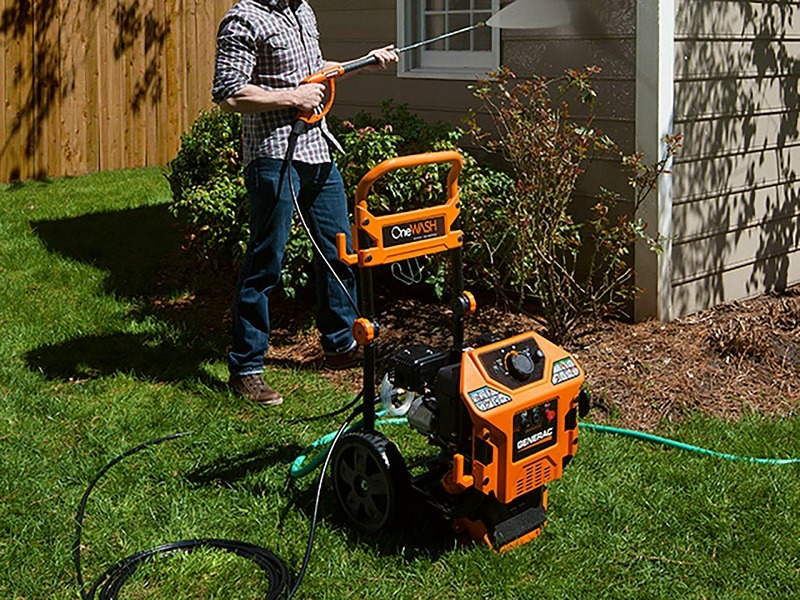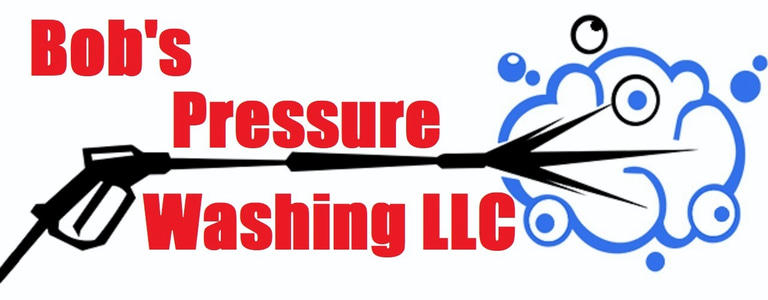The Ultimate Guide to Using a Pressure Washer for Homeowners and First-Time Users
The Ultimate Guide to Using a Pressure Washer for Homeowners and First-Time Users
EXTERIOR CLEANING SERVICE PROCESSESBASIC HOME MAINTENANCECURB APPEALPRESSURE WASHING SERVICES


Introduction to Pressure Washers
Pressure washers have become invaluable assets for homeowners looking to maintain the exterior of their properties efficiently. At its core, a pressure washer is a mechanical device designed to use high-pressure water to clean surfaces effectively. Driven by either an electric or gas engine, these machines can significantly reduce the time and effort required for various cleaning tasks around the home.
There are two main types of pressure washers: electric and gas-powered. Electric pressure washers are generally more portable, quieter, and require less maintenance, making them suitable for light to medium-duty cleaning tasks. They are ideal for tasks such as washing cars, outdoor furniture, and smaller decks or patios. Gas-powered pressure washers, on the other hand, deliver higher water pressure and are more suitable for extensive, heavy-duty cleaning tasks. They are the preferred choice for cleaning large driveways, heavily soiled siding, and expansive decks or patios.
The versatility of pressure washers extends to a variety of household cleaning applications. For example, using a pressure washer to clean siding can help remove built-up grime, mildew, and dirt, enhancing the curb appeal of a home. Similarly, pressure washers can transform a dirty and stained driveway into a clean, welcoming entryway. Decks and patios, often subjected to the elements, can be restored to their original state, free of algae, moss, and dirt, with the powerful cleaning capabilities of these machines.
In essence, the primary benefit of using a pressure washer lies in its efficiency and effectiveness. This tool enables homeowners to accomplish in minutes what would take hours or even days with manual scrubbing and conventional cleaning methods. Whether a small cleaning task or a large project, pressure washers offer a quick, convenient, and thorough solution for maintaining a home's exterior.
Choosing the Right Pressure Washer
Selecting the appropriate pressure washer for your needs is a crucial first step in ensuring optimal performance and user satisfaction. Several key factors should influence your decision, including pressure output, size and weight, portability, available attachments, and additional features.
The pressure output is typically measured in pounds per square inch (PSI) and gallons per minute (GPM). A higher PSI indicates a more powerful pressure washer, capable of tackling tougher stains and cleaning surfaces more effectively. For general household cleaning tasks such as washing patios and vehicles, a PSI rating between 1,500 and 2,500 is usually adequate. For more demanding jobs, such as removing paint or cleaning large driveways, a PSI of 3,000 or higher is recommended.
Size and weight are also significant factors to consider, particularly if you need to move the pressure washer frequently. A lightweight, compact model is easier to handle and store but may offer less power. On the other hand, larger, more powerful units might prove cumbersome for some users. Portability features like wheels and handles can greatly enhance maneuverability, making it easier to transport the pressure washer around your property.
Attachments and accessories play a vital role in maximizing the versatility of your pressure washer. Look for models that come with a variety of nozzles, brushes, and extension wands to expand your cleaning options. Specialized nozzles can help with specific tasks, such as fan nozzles for broad surfaces or rotary nozzles for persistent grime.
Additional features can also improve overall user experience. Integrated detergent tanks allow for easy application of cleaning solutions, while adjustable pressure settings enable you to tailor the power output to different surfaces and materials.
For those on a budget, electric pressure washers offer a balance between performance and affordability. Models like the Sun Joe SPX3000 and the Greenworks GPW1501 are popular choices. For more robust requirements, consider investing in gas-powered options such as the Simpson Cleaning MSH3125 or the Generac SpeedWash 7122, which provide higher PSI ratings and greater durability.
Setting Up Your Pressure Washer
Properly setting up your pressure washer is crucial for ensuring efficient and safe operation. Begin by unpacking the pressure washer and laying out all the components. For most models, the essential parts include the main unit, high-pressure hose, spray gun, nozzles, and any additional accessories. Familiarize yourself with the user manual, as the specific setup can vary between different models and manufacturers.
First, securely attach the high-pressure hose to both the main unit and the spray gun. Ensure all connections are tight to prevent any leaks. Next, select the appropriate nozzle for your cleaning task. Most pressure washers come with a set of interchangeable nozzles, each designed for different spray patterns and intensities. Attach the chosen nozzle to the end of the spray gun by twisting it into place until it clicks securely.
If you are using a gas-powered pressure washer, fill the fuel tank with the recommended type of gasoline. For electric models, connect the power cord to a grounded outlet. Additionally, attach the water supply hose to the inlet on the pressure washer, ensuring a tight fit to prevent any water leakage. Turn on the water supply to allow water to flow into the unit.
Before starting the pressure washer, perform a thorough safety check. Inspect all connections for any signs of wear or loosening. Ensure that the area around you is free of obstacles and that the unit is placed on a stable surface. Familiarize yourself with the emergency shut-off procedure detailed in the user manual.
Once setup is complete and all checks have been performed, you can start the pressure washer according to the manufacturer's instructions. For gas models, follow the proper starting procedure, usually involving a choke and pull-start mechanism. Electric models typically require a simple switch flip.
When your cleaning task is finished, it’s important to store the pressure washer correctly. Turn off the unit, disconnect all hoses, and allow any remaining pressure to release. Store the pressure washer in a clean, dry location, away from direct sunlight and extreme temperatures, to prolong its lifespan and maintain its efficiency.
Safety Tips and Precautions
Utilizing a pressure washer can greatly enhance the efficiency of your cleaning projects. However, it's crucial to prioritize safety to prevent accidents and damage. First and foremost, ensure you are equipped with appropriate protective gear. Wearing gloves can safeguard your hands from high-pressure water and chemicals. Goggles are essential to protect your eyes from debris and water splashes. Furthermore, sturdy, non-slip footwear will provide you with the necessary stability while working.
Safe operating practices are key to effective pressure washing. Maintain a safe distance from the surfaces you are cleaning; too close, and you risk causing damage. Generally, a distance of at least 6 inches is recommended, but this can change depending on the material being cleaned and the pressure setting. Additionally, avoid directing the pressure washer at electrical outlets, wires, or any other electrical components. Water and electricity are a dangerous combination and pose a significant risk of electric shocks.
When using chemicals or detergents with your pressure washer, handle them with care. Always read the manufacturer’s instructions and use only the recommended amount. Overusing detergents can not only harm your surfaces but also be detrimental to the environment. Ensure that chemicals are properly diluted if required and stored safely away from children and pets.
Avoid common mistakes that can lead to accidents or damage. One frequent error is using too high a pressure setting; always start with a lower setting and adjust as needed. Another mistake is not securing loose items in the cleaning area, which can become hazardous projectiles. Additionally, never point the pressure washer at people or animals, as the high-pressure water can cause severe injuries.
By adhering to these safety tips and precautions, you can safely and efficiently use your pressure washer to maintain your home's exterior. Exercise caution and take the necessary safety measures to make your cleaning experience both effective and safe.
Using Your Pressure Washer Effectively
To leverage the full capabilities of a pressure washer, it’s crucial for homeowners and first-time users to understand the nuances of operating the device for various cleaning tasks. Primarily, the selection of the right nozzle plays a pivotal role in ensuring optimal results. Pressure washers typically come with a range of nozzles, each designated by a color that corresponds to a specific spray angle and intensity. For instance, a red nozzle (0-degree) delivers the most concentrated spray, suitable for tackling tough stains on hard surfaces like concrete. Conversely, a 25-degree green nozzle offers a gentler spray, ideal for general cleaning tasks around the home.
Adjusting pressure settings is another significant aspect to consider. Most pressure washers allow users to modulate the intensity of the water stream, which can be beneficial for handling different materials. For delicate surfaces such as wood, it is advisable to use a lower setting to prevent damaging the material. When cleaning brick or concrete, a higher pressure may be necessary to remove grime and moss effectively.
The technique with which you wield your pressure washer also significantly impacts the outcome. For concrete surfaces, maintain a consistent distance from the surface and employ a sweeping motion to cover large areas evenly. When addressing wooden surfaces, such as decks or fences, it’s prudent to start with a wider spray angle to gauge the impact and avoid chipping the wood. Ensure you maintain the nozzle at a safe distance to avert any potential damage.
Practical tips for achieving the best results include pre-soaking the surface to loosen dirt and stains and using detergents specially formulated for pressure washers. Let the detergent sit for a few minutes before rinsing, but never allow it to dry on the surface. Implementing these strategies will help in executing cleaning tasks efficiently without compromising the integrity of the surfaces being cleaned.
Maintenance and Troubleshooting
Regular maintenance of your pressure washer is crucial for ensuring its longevity and performance. One of the fundamental tasks is cleaning or replacing the filters. Clogged filters can restrict water flow, leading to decreased pressure and potential damage to the unit. It's advisable to inspect the filters before and after each use to prevent dirt and debris build-up. Additionally, checking the hoses for any signs of wear and tear, such as cracks or leaks, can help avert unexpected failures during operation.
Another indispensable maintenance step is winterizing your pressure washer. If you live in a region with cold winters, it's essential to drain all the water from the pump, hose, and detergent reservoir to prevent freezing. Add a pump saver antifreeze solution to protect the internal seals and pistons, ensuring the unit remains in optimal condition for the next use.
Despite regular maintenance, users might encounter common issues. One frequent problem is low pressure. This can often be traced back to obstructions in the spray nozzle or an insufficient water supply. To resolve this, clean the nozzle tip with a small brush or needle and ensure that your water source delivers the necessary flow rate as specified by the manufacturer.
Leaks are another common issue. They can stem from loose connections or worn-out seals. Tightening all the fittings or replacing faulty O-rings usually resolves this problem. For engine troubles, verify the fuel and oil levels, clean the air filter, and check the spark plug for wear or damage. If the engine still won't start, consider consulting a professional technician for a more thorough diagnosis.
By adhering to these maintenance tips and addressing issues promptly, homeowners can ensure their pressure washer remains a reliable tool for various cleaning tasks around the house. Consistent care not only enhances the unit's efficiency but also prolongs its lifespan, providing a hassle-free experience for first-time users and seasoned homeowners alike.
